As traders navigate the complexities of the financial markets, mastering tools like the Williams %R Indicator can provide invaluable insights for informed decision-making. With its unique scale and ability to signal overbought and oversold conditions, understanding this indicator is paramount.
By grasping the nuances of interpreting signals, setting up the indicator effectively, and incorporating it into robust trading strategies, traders can potentially enhance their trading outcomes.
Exploring the seven essential tips for comprehending the Williams %R Indicator could offer a deeper understanding of its nuances and empower traders to navigate the markets with more precision and confidence.
Interpretation of Williams %R
Analyzing the Williams %R indicator involves interpreting its readings to assess market momentum and potential price reversals. The Williams %R ranges from 0 to -100, with values above -20 signaling overbought conditions and below -80 indicating oversold conditions.
When the indicator shows overbought levels, it suggests that the market may be due for a downward correction. Conversely, oversold readings imply a possible upward price correction. However, it's crucial to note that overbought conditions do not guarantee an immediate reversal, nor do oversold conditions ensure an immediate price increase.
Traders use the Williams %R to gauge the strength of a trend by comparing price movements with the indicator's signals. By analyzing the relationship between closing prices and the indicator's values, traders can identify potential momentum shifts in the market.
Understanding the nuances of interpreting the Williams %R indicator can provide valuable insights for making informed trading decisions.
Setting Up Williams %R Indicator
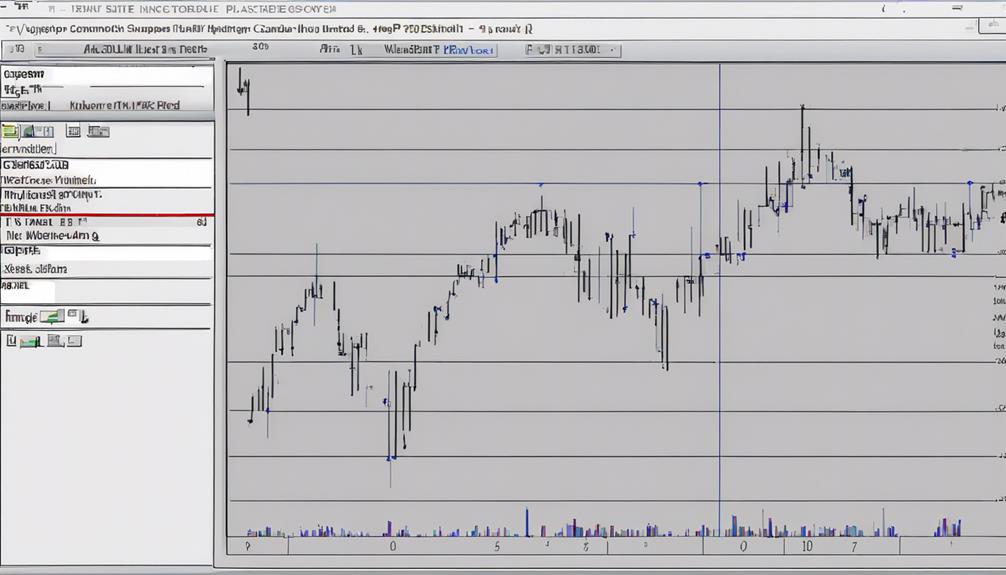
When setting up the Williams %R indicator, it is crucial to focus on defining the indicator parameters and understanding the interpretation techniques.
By establishing the period and scale correctly, traders can tailor the indicator to suit their trading style and preferences.
Attention to these setup details lays the foundation for utilizing the Williams %R effectively in technical analysis.
Indicator Parameters
Customizing the period length of the Williams %R indicator according to the specific trading timeframe and individual stock characteristics can significantly enhance signal accuracy. While the default period is 14, utilizing 10 periods for daily analysis and 8 for weekly analysis is common among traders aiming to capture different trends effectively.
Personalizing the period length based on the stock being analyzed is crucial for refining trading strategies using this momentum indicator. Integrating Williams %R with the Relative Strength Index (RSI) can offer additional confirmation signals in technical analysis.
Adapting the indicator parameters to suit various stocks ensures a more precise representation of their unique price movements and trends, enhancing the effectiveness of the Williams %R indicator in formulating trading decisions.
Interpretation Techniques
To effectively utilize the Williams %R indicator for technical analysis, traders must first understand the key interpretation techniques involved in setting up this momentum indicator.
- Adjust the period length: Typically set at 14 days, the period length determines the historical data used in calculations.
- Identify overbought and oversold levels: Values above -20 indicate overbought conditions, while those below -80 signify oversold conditions.
- Interpret indicator moves: Watch for Williams %R crossing above -20 for potential sell signals and below -80 for potential buy signals.
- Generate trade signals: Use Williams %R to identify trend reversals or continuations, signaling entry or exit points in the market.
Mastering these techniques empowers traders to make informed decisions based on Williams %R readings.
Identifying Overbought and Oversold Levels
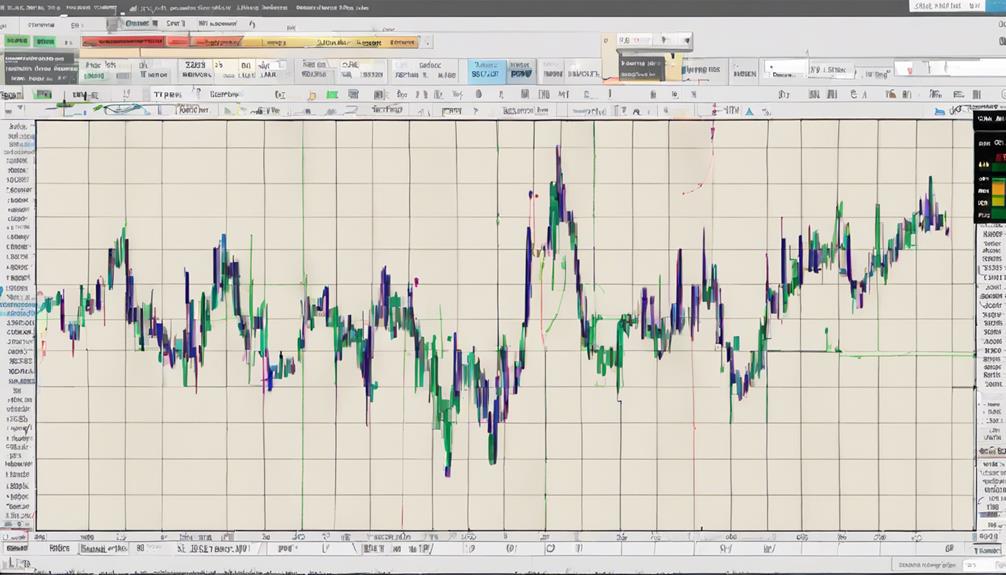
Identifying optimal entry and exit points in the market can be facilitated by recognizing overbought and oversold levels indicated by the Williams %R indicator. Overbought levels in Williams %R, typically above -20, suggest a potentially overvalued market condition. Conversely, oversold levels, generally below -80, indicate a potentially undervalued market condition.
When the Williams %R readings surpass -20, it may signal selling opportunities as the market could be overbought. On the other hand, readings below -80 could indicate buying opportunities as the market may be oversold. By identifying these levels, traders can anticipate potential reversals or the continuation of trends.
Understanding when the market is overbought or oversold is crucial for making informed trading decisions based on the Williams %R indicator's signals. This knowledge empowers traders to strategically enter or exit positions in alignment with market conditions, enhancing the effectiveness of their trading strategies.
Incorporating Williams %R in Trading Strategies
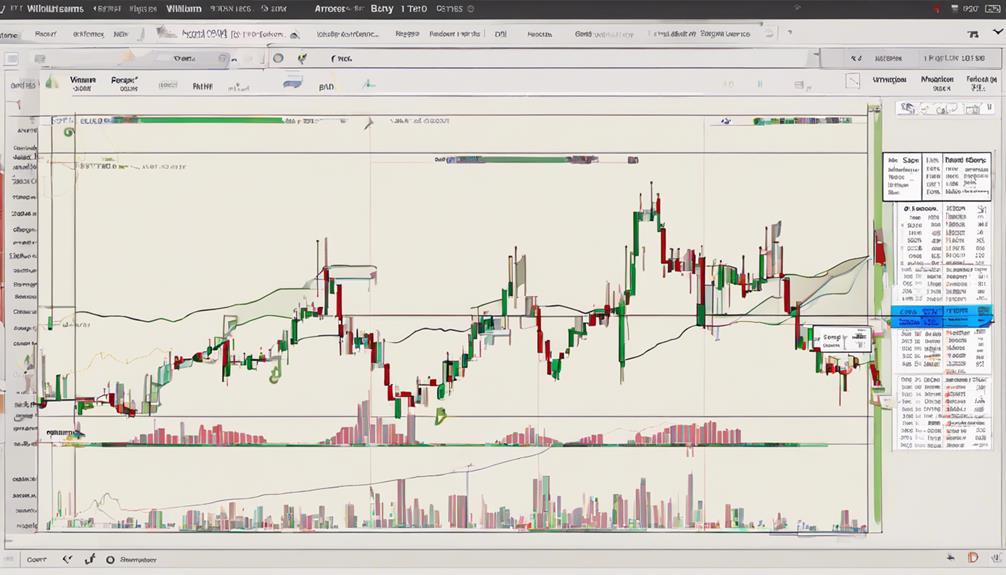
Utilizing the Williams %R indicator in trading strategies offers a strategic approach to identifying market conditions and potential trade signals. When incorporating Williams %R in trading strategies, traders can benefit from the following:
- Identifying Overbought and Oversold Levels: Williams %R can help traders pinpoint overbought conditions above -20 and oversold conditions below -80, allowing for timely decision-making based on market extremes.
- Generating Buy and Sell Signals: Traders can utilize Williams %R to generate buy signals when the indicator moves below -80 and sell signals when it moves above -20, providing clear entry and exit points for trades.
- Interpreting Momentum Signals: Incorporating Williams %R in trading strategies involves interpreting signals of bullish momentum above -20 and bearish momentum below -80, guiding traders on potential market directions.
- Maximizing Profit Potential: Holding positions based on Williams %R signals until opposite signals are reached can help traders make informed decisions and maximize profit potential by capturing price movements effectively.
Understanding Signals From Williams %R
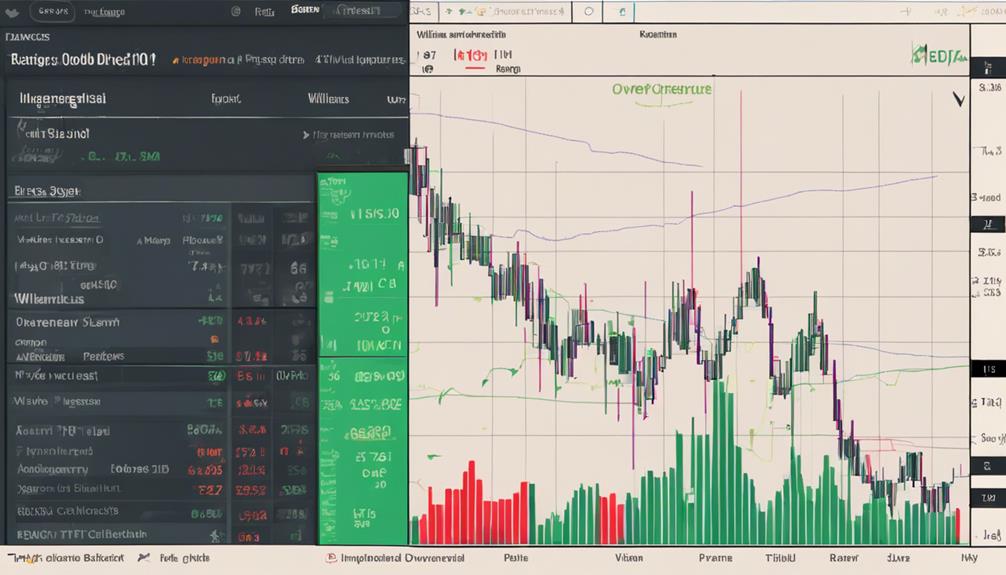
Analyzing signals from Williams %R involves understanding basic signal interpretation principles and pinpointing optimal entry points based on market conditions.
By grasping the fundamentals of signal identification, traders can better anticipate potential shifts in market sentiment and adjust their strategies accordingly.
Timing plays a crucial role in utilizing Williams %R signals effectively, guiding traders to make informed decisions at opportune moments for maximizing trading outcomes.
Signal Interpretation Basics
Understanding signals from the Williams %R indicator is essential for traders aiming to interpret market conditions accurately and make informed trading decisions. When interpreting signals from Williams %R, traders should consider the following basics:
- Williams %R values above -20 indicate overbought conditions, potentially signaling a reversal in price movement.
- Readings below -80 on the Williams %R indicator suggest oversold conditions, hinting at a possible price increase.
- Overbought readings may precede a price decline, while oversold readings could precede a price rise.
- Traders often look for buying opportunities when Williams %R crosses below -80 and selling opportunities when it crosses above -20.
These signals can help traders anticipate shifts in market momentum based on overbought and oversold conditions.
Timing Entry Points
In trading with the Williams %R indicator, identifying optimal entry points hinges on recognizing shifts in market momentum signaled by overbought and oversold conditions. Timing entry points typically involves buying when Williams %R is below -80 and selling when it rises above -20. Signals from Williams %R serve as crucial indicators for potential trend reversals or continuations.
Entry points are often generated when Williams %R moves out of overbought or oversold territories, presenting opportunities for traders to enter or exit positions. Understanding these signals is essential for effectively timing market entries, as it helps traders capitalize on favorable price movements and avoid potential reversals.
Proper utilization of Williams %R signals can enhance trading strategies and improve overall performance.
Analyzing Price Reversals With Williams %R
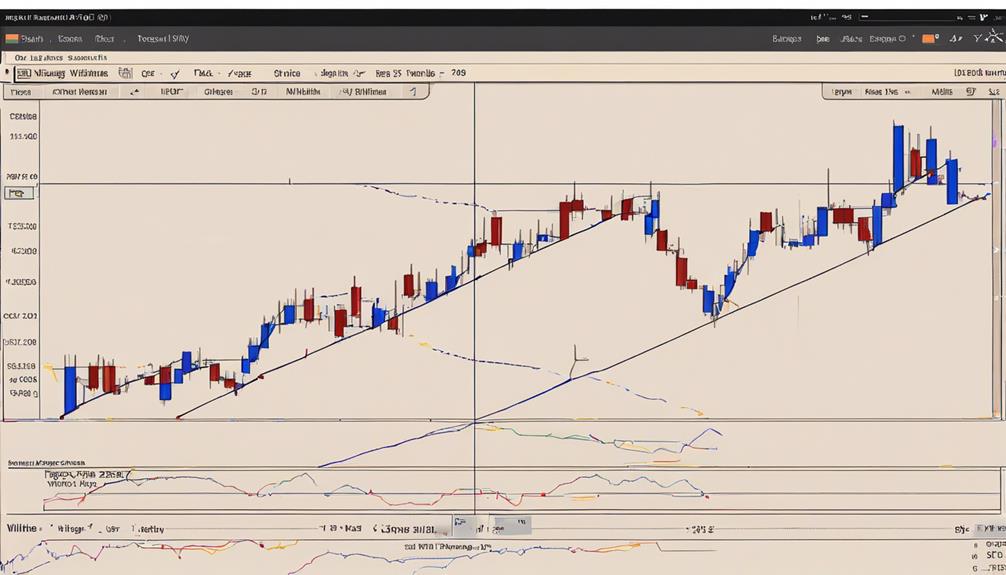
When observing price reversals with Williams %R, attention is drawn to its indications of overbought and oversold conditions. Analyzing price reversals with Williams %R involves the following key aspects:
- Identifying Overbought and Oversold Conditions: Williams %R signals overbought conditions when readings rise above -20 and oversold conditions when they fall below -80, suggesting potential reversal points in the market.
- Divergence from Price Movements: Price reversals can be anticipated when Williams %R diverges from actual price movements. This discrepancy indicates a possible shift in momentum and a forthcoming trend reversal.
- Momentum Shifts: Traders use Williams %R to analyze price reversals by monitoring shifts in momentum. Sudden changes in the indicator's direction can signify the beginning of a new trend or a reversal in the current trend.
- Trend Identification: Understanding how Williams %R reacts to price movements helps in identifying trend changes. Traders can use these insights to make informed decisions about entering or exiting positions based on potential price reversals.
Enhancing Trading Decisions With Williams %R
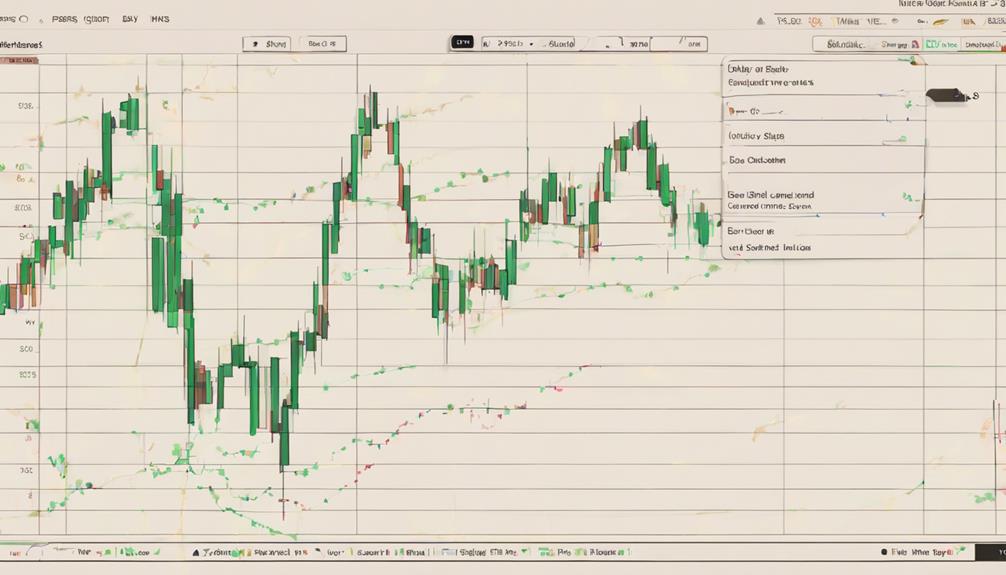
Enhancing trading decisions with Williams %R requires a strategic integration of technical analysis and market insights to optimize entry and exit points effectively. Williams %R is a valuable tool for identifying overbought and oversold conditions in the market, indicating potential entry points for buying or selling.
By paying attention to the levels at which Williams %R crosses -20 (indicating overbought conditions) or -80 (indicating oversold conditions), traders can make more informed decisions. Moreover, incorporating Williams %R alongside other technical indicators can provide further confirmation for trading strategies.
This indicator can also help in recognizing momentum shifts and potential trend reversals, enabling traders to capitalize on profitable opportunities. By including Williams %R in a comprehensive trading plan, traders can enhance their decision-making processes and improve risk management strategies for more successful trading outcomes.
Can the Williams %R Indicator be Used for Both Market Analysis and Understanding?
When it comes to market analysis tips with Williams %R, it is a versatile indicator that can be used for both market analysis and understanding. This powerful tool helps traders identify overbought and oversold levels, as well as potential trend reversals. Its unique calculations make it a valuable resource for informed decision-making.
Frequently Asked Questions
How Do You Read a Williams R Indicator?
Reading a Williams %R indicator involves analyzing its values relative to -20 and -80 to detect overbought or oversold conditions. Traders observe potential trend shifts when the indicator moves out of these zones, aiding in decision-making and market analysis.
What Is the Best Setting for the Williams %R Indicator?
For optimal performance, the best setting for the Williams %R indicator often involves using a 14-day period. However, customization based on trading timeframe and stock characteristics can enhance effectiveness. Experimentation with different periods is crucial for alignment with individual strategies.
What Is the Williams Trading Strategy?
The Williams trading strategy utilizes the Williams %R indicator to identify overbought and oversold market conditions. Traders buy when %R is below -80 and sell when above -20, aiming to profit from potential price reversals or continuations.
What Is the Formula for Williams %R?
The Williams %R indicator formula is (Highest High – Close) / (Highest High – Lowest Low) multiplied by -100. This calculation compares the closing price to the highest high and lowest low over a specific period to determine market conditions.
Conclusion
In conclusion, mastering the Williams %R Indicator is crucial for traders seeking to enhance their trading strategies.
By interpreting signals of market conditions, identifying overbought and oversold levels, and incorporating this indicator into trading strategies, traders can make informed decisions for buying and selling positions.
Analyzing price reversals and understanding trend strength can further improve trading outcomes.
Remember, in the world of trading, knowledge of the Williams %R Indicator is truly a beacon of light guiding the way.
